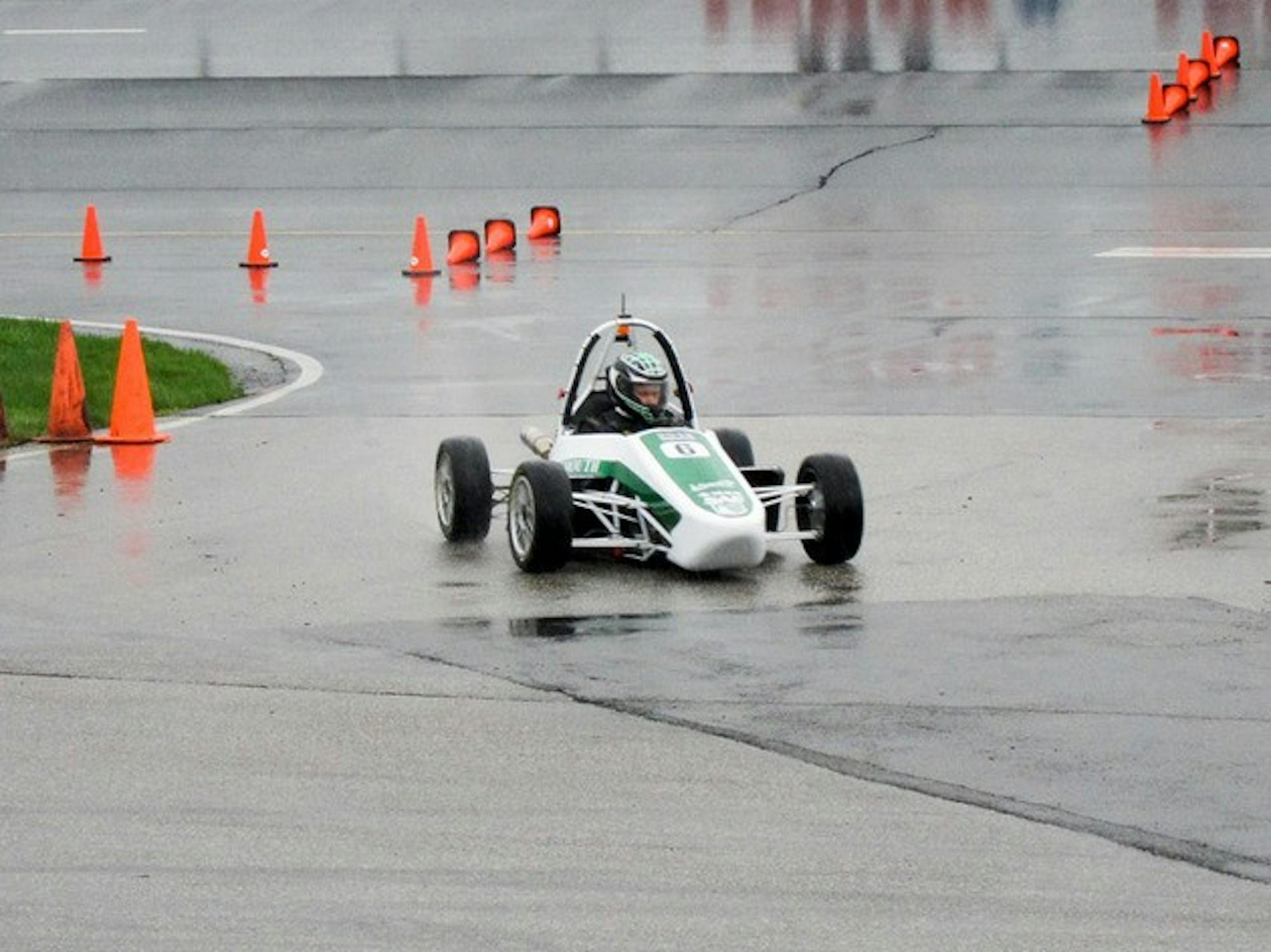Mann led the team with Francis Fortin-Houle Th'11, Adam Marano Th'11 and Philly Croteau Th'11 in the 15-week building period. The teams raced their finished products in a three-day competition that began Monday and finished Wednesday.
The cars underwent a series of tests for both speed and fuel efficiency, including an acceleration, endurance and autocross event, John Collier, a Thayer professor and faculty advisor for the team, said.
"The endurance event involved 40 laps around the track for a total of 20 kilometers," he said. "Each team was only given two liters of fuel with which to complete the course, so you're trying to go as fast as you can but also as economically, because if you run out of fuel you won't finish."
The Dartmouth car placed fifth in the endurance race, even though it only completed 24 of 40 laps with the designated fuel, according to Mann.
The teams were challenged to create a car with an electric operating system along with a traditional internal combustion engine, which is gas-powered. The teams were required to use both systems during the acceleration test, according to Collier.
"Some of the cars didn't use the electrical system at all outside of the acceleration test," he said. "This means that the car is simple and reliable to build, but it doesn't give you much training in complex hybrid engineering. You can compete in the rest of the events without an electrical system working, and there were a significant number of cars who did that."
The Dartmouth team chose to build a car that relied on both systems, which increased the technical complexity of the building process, Collier said.
"The Dartmouth car is arguably one of the most complex," he said. "It includes a parallel hybrid system, which means it can run on gas only, electricity only, or both at the same time. The students pushed really hard to learn new technologies and apply them to the car."
Despite the team's success in the competition, it was difficult to know that the car "hadn't reached its full potential," Mann said.
"With the proper amount of time testing and tuning, it would be one of the best cars at the competition by far," he said. "So on that side it's frustrating to know that there is more the car can do."
Building the car involved an "enormous" time commitment for the Dartmouth team, according to Collier.
"In total, the team was putting in about 400 hours a week for 15 weeks to build the car," he said. "It's a very complex car and a lot of the parts are not available commercially, so they have to be built in the Thayer machine shop," he said.
In its preparations for the race, the team ran into several time constraints, Mann said.
"We made a choice not to cut corners, and that meant we didn't have the real manpower to get done early enough," Mann said. "We had very little driving and testing time, but we were still ecstatic because we knew our car had a great design."
Although the competition also included a sustainability component, the cars were "not that clean," Fraser said.
"At this point, things like carbon emissions aren't something we're really considering," he said. "The competition itself is not particularly clean, but we're training students to build cleaner vehicles in the future."
This year's Dartmouth design expanded on lessons the team had learned from participating in past competitions, according to Mann.
"The biggest thing was that last year we ran out of fuel so we went to a fuel-injected engine, meaning we needed to make our own starting solution," he said. "We also tried to limit our components by making our electric motor power out and generate energy back to the car, as well as starting the engine."
Mann began work on the car as a culminating project for his degree at Thayer, he said. For Mann and the other team captains, a typical week involved anywhere from 40 to 60 hours working on the car and handling the "fundraising, bookkeeping and marketing" of the operation, he said.
The captains spent "every waking moment" working towards the completion of the car, according to Mann.
"You're not only building a car, but it's also a lot like running a business," Mann said. "It didn't necessarily need to be this big of a time commitment, but we really enjoy it and take a lot of pride in what we do."
Doug Fraser, a research engineer at Thayer, created the Formula Hybrid Competition in 2007. The main focus of the event has always been education for engineering students, according to Fraser.
"We are trying to help students learn a lot of multidisciplinary skills, including project management," Fraser said. "In addition, hybrid cars have mechanical and electrical components that have to be combined in logical ways, so we're teaching students to work together on that aspect as well."




